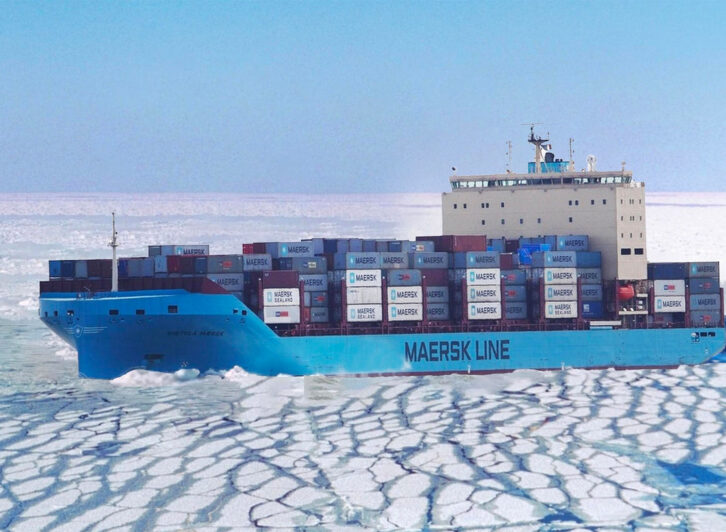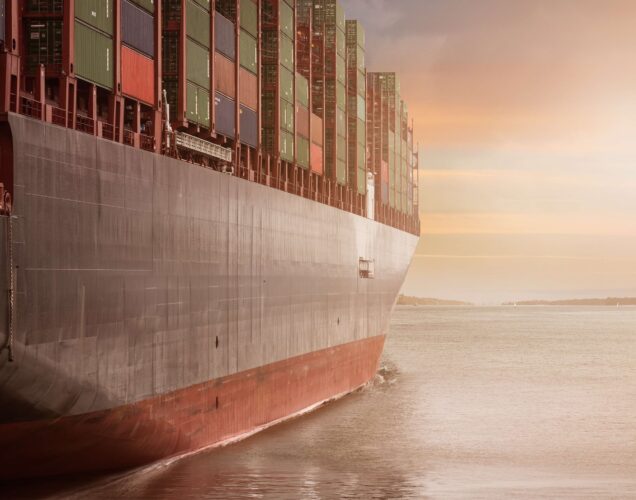Danish shipping company Maersk is sending a container ship through the Northern Sea Route for the first time, as ice caps in the Russian Arctic melt away due to climate change. It is designed as a trial run, but has the potential to cut shipping distances from East Asia to Europe by 8,200 kilometres (5,000 miles). The Venta Maersk is to sail from Vladivostok to St Petersburg, carrying some 3,600 containers loaded with South Korean electronics and Russian fish. It is scheduled to arrive at its destination port in late September. The journey is expected to be up to 14 days faster than the alternative southern route via the Suez Canal, significantly reducing fuel and other costs.
Maersk intends to collect data on the Northern Sea Route during the trial voyage, in order to evaluate whether the melting of sea ice in the Arctic has made the route economically viable for future use. Until recently, the route would have required any commercial vessel to be escorted by nuclear-powered icebreaker ships, rendering the passage prohibitively expensive. However, with rising global temperatures and melting polar ice, the situation is changing. According to a 2016 report from the Copenhagen Business School, the Northern Sea Route is likely to become economically feasible for shipping by around 2040, if ice cover continues to melt at its present rate.
The Venta Maersk won’t be the first ever ship to traverse the Northern Sea Route. Last year, the Christophe de Margerie became the very first vessel to sail the route unaided by icebreakers, while Novatek, a Russian gas company, has also been sending specially built tankers via the passage in recent months.
According to Maersk, the voyage is intended as a one-off trial, rather than the launch of a new, regular service. A spokesperson for the company said: “The trial passage will enable us to explore the operational feasibility of container shipping through the Northern Sea Route and to collect data … Currently, we do not see the Northern Sea Route as a commercial alternative to our existing network, which is defined by our customers’ demand, trading patterns and population centres.”
The 200-metre-long Venta Maersk is a specially built “ice class” vessel, one of a few of its size in the world. The ship’s systems are designed to function down to at least -25°C, while the hull is strengthened to ensure it can operate in waters with limited levels of surface ice. There are also cold-weather modifications for the crew, including a “winged” bridge and sheltered sections to the fore of the ship to make mooring safer in cold temperatures. The vessel’s crew are also required to be specialists in operating in icy waters and extreme temperatures.
While the potential future use of the Northern Sea Route could be advantageous for shipping businesses, environmental groups have expressed concerns. Sune Scheller of Greenpeace Nordic told the Independent: “If these ships were to have an accident then heavy fuel oil in the marine environment is bad. It’s even worse in an Arctic environment. The cold water temperatures slow or halt the natural breakdown of the oil. So it remains in marine environments for a much longer period of time.”
It’s unlikely we’ll see container ships regularly passing through the Northern Sea Route any time soon. However, advances in technology might make it a possibility for freight forwarding companies in the future. Maersk’s trial should go some way to determining its viability from both a commercial and environmental perspective.




